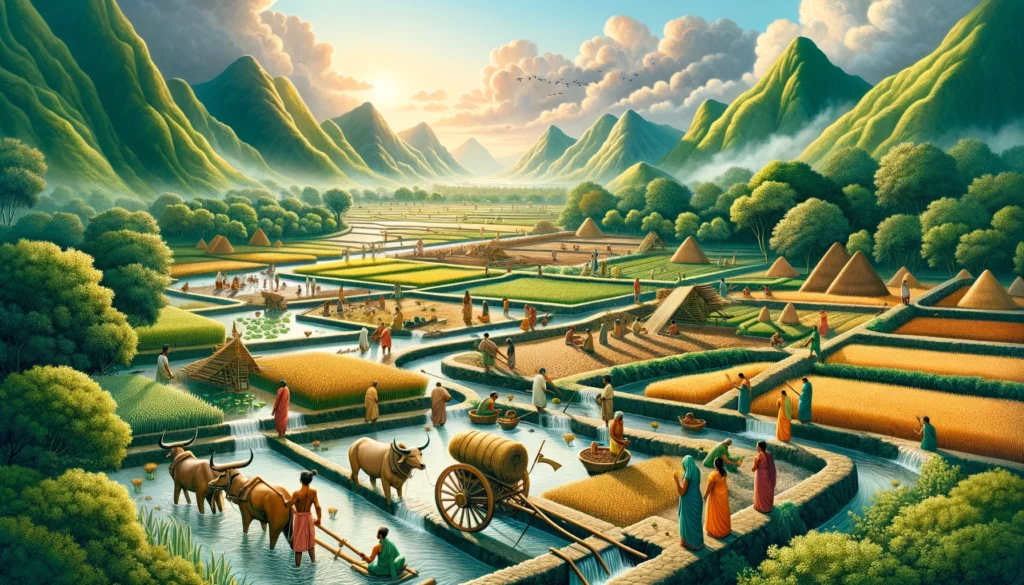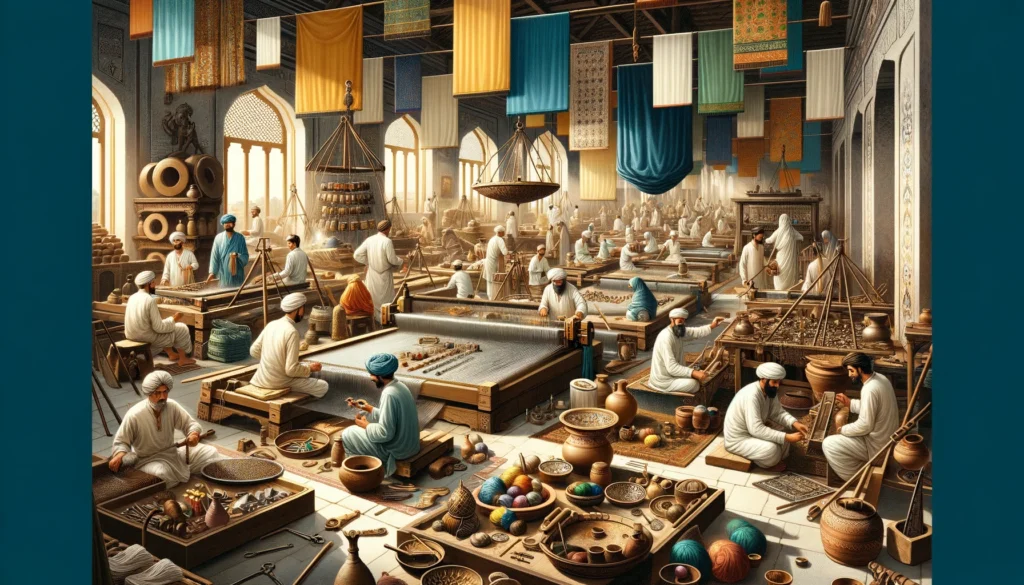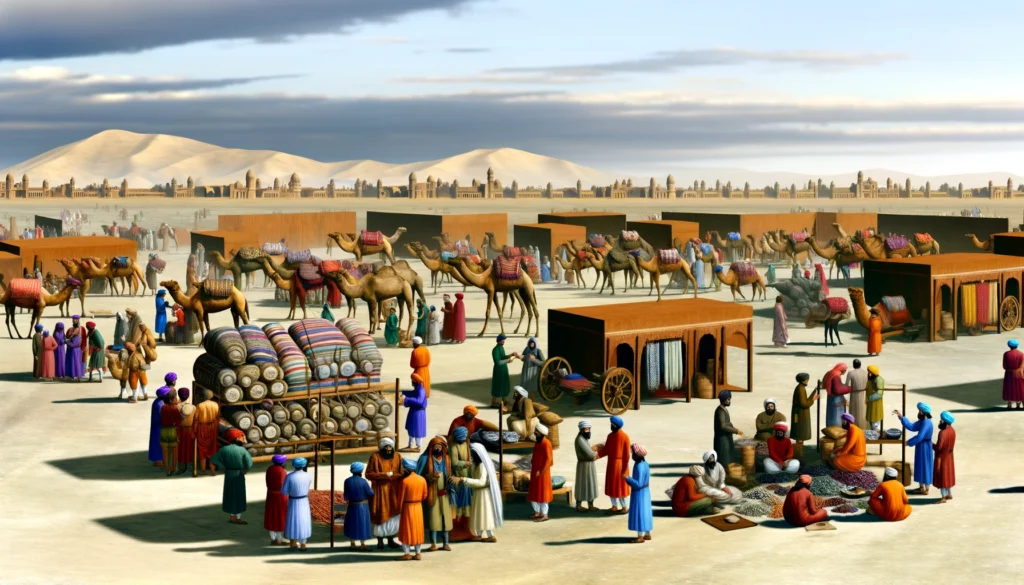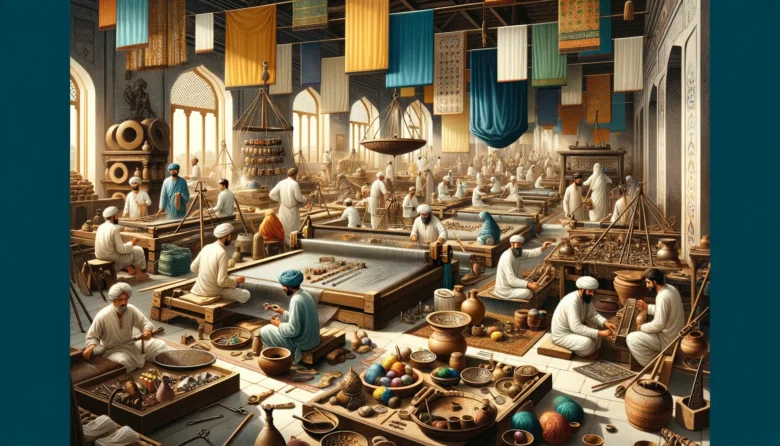Welcome to the first part of our blog series: “India’s Economic Odyssey: Past to Present,” where we embark on a voyage through time to unravel the economic tapestry of India. This series aims to shed light on how historical events, trade dynamics, and agricultural advancements have shaped India’s economic landscape from ancient times to the present day.
Ancient Economy: The Cradle of Commerce
The story of India’s economic journey begins in the era of ancient commerce, a period when agriculture not only shaped the landscape but also the very foundation of society. The reliance on monsoon rains dictated the rhythms of agricultural productivity, which in turn, sustained the vast majority of the population engaged in farming. This era was characterized by significant advancements in agriculture, the development of intricate trade networks, and the birth of urban centers, reflecting a sophisticated understanding of commerce and economy.

Trade, both domestic and international, played a pivotal role in ancient India. The domestic market thrived on the exchange of essential goods such as spices, textiles, and grains, facilitated by vibrant marketplaces and periodic trade fairs. These were not just economic activities but also social events that contributed to the cultural fabric of the time.
On the international front, India became a crucial node in the Silk Road network, engaging in extensive trade with the Roman Empire, the Middle East, and Southeast Asia. This trade was not merely a transfer of goods but a cultural exchange that enriched the Indian subcontinent with new ideas, practices, and technologies.
The introduction of coinage around the 6th century BCE was a landmark development, simplifying trade and enabling the accumulation of wealth. Economic policies and administration saw refinement under dynasties like the Maurya and Gupta empires, which introduced standardized weights and measures, taxation systems, and state control over key resources. These advancements laid the groundwork for a thriving economy, setting the stage for further developments in the medieval period.
Medieval Economy: A Period of Diversification and Growth
The medieval period in India was marked by a notable expansion in the economy, driven by diversification in agriculture, the rise of trade and commerce, and significant urbanization. This era saw the introduction of new crops from distant lands, which, along with advancements in agricultural technology such as improved irrigation methods, transformed the agricultural landscape of India.

The period was also characterized by the flourishing of overseas trade, with merchant guilds emerging as powerful entities that managed trade routes, set prices, and acted as banks, demonstrating an early form of economic organization and financial management.
Urbanization was another defining feature of the medieval economy. Cities like Delhi, Agra, and Varanasi became bustling centers of trade, culture, and political power, facilitated by the growth of craft industries. Artisans, working in textiles, pottery, metalwork, and jewelry, contributed to the economic prosperity, with their guild-like organizations regulating production standards and practices.
Despite challenges posed by invasions and political upheavals, the medieval period was a time of significant cultural and economic exchange. The introduction of Islamic banking and finance practices to the Indian economy during this time highlighted the period’s openness to new ideas and innovations.
The Mughal Influence
The Mughal era stands out as a golden age of economic prosperity and cultural development in India. The Mughal economy was characterized by a sophisticated system of agriculture, trade, and manufacturing, underpinned by progressive policies and infrastructure that facilitated economic growth and integration into the global economy.

Agriculture remained the backbone of the Mughal economy, with the introduction of the efficient “Zabt” system by Akbar, which involved detailed land surveys to assess productivity and determine tax rates. This system not only ensured a regular revenue supply to the Mughal treasury but also encouraged agricultural expansion and the cultivation of cash crops like cotton, indigo, and sugarcane, enhancing the empire’s wealth.
Trade and commerce flourished under the Mughals, with India exporting textiles, spices, indigo, and precious stones, and importing gold, silver, and luxury goods. The Mughals’ investment in port infrastructure improved maritime trade, with ports like Surat and Chittagong becoming major hubs for international commerce. The era also witnessed significant growth in artisanal production, particularly in textiles, metalwork, and jewelry, with urban centers such as Agra, Delhi, and Lahore thriving as centers of economic activity and cultural exchange.
The Mughal period’s influence on the Indian economy was profound, laying the groundwork for future developments and showcasing the empire’s ability to foster economic prosperity through enlightened governance, trade, and cultural openness.
Author’s Note
As we conclude this first chapter of “India’s Economic Odyssey: Past to Present,” it’s clear that the ancient and medieval periods laid a complex and rich foundation for India’s economy. These eras of innovation and growth set the stage for the dramatic transformations that would follow. Stay tuned for our next post, where we delve into the economic changes during the Mughal era, a period that further shaped India’s economic destiny.
G.C., Ecosociosphere contributor.
References and Further Reading
- “The Economic History of India” by Tirthankar Roy, offers an in-depth analysis of India’s economic development through the ages.
- “India in the World Economy: From Antiquity to the Present” by Tirthankar Roy, provides insights into India’s trade relations and economic strategies over millennia.
Join us as we continue to explore the shifts and turns in India’s economic landscape, each chapter of history offering lessons and insights into the complexities of growth, development, and resilience.





Comments
Your point of view caught my eye and was very interesting. Thanks. I have a question for you.
Can you be more specific about the content of your article? After reading it, I still have some doubts. Hope you can help me.
Can you be more specific about the content of your article? After reading it, I still have some doubts. Hope you can help me.
Can you be more specific about the content of your article? After reading it, I still have some doubts. Hope you can help me.
I enjoyed reading your piece and it provided me with a lot of value. http://www.hairstylesvip.com
The articles you write help me a lot and I like the topic http://www.hairstylesvip.com
You’ve been great to me. Thank you! http://www.hairstylesvip.com
Thanks for posting. I really enjoyed reading it, especially because it addressed my problem. http://www.hairstylesvip.com It helped me a lot and I hope it will help others too.
Thanks for sharing. I read many of your blog posts, cool, your blog is very good.